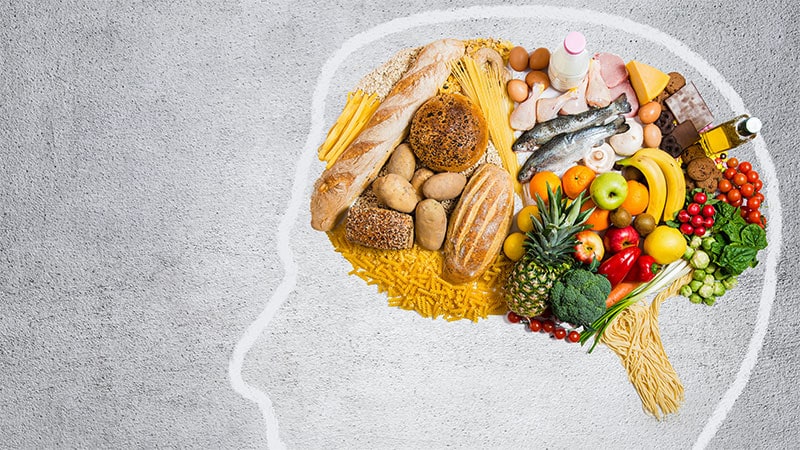I was excited to hear that Julia Belluz and Kevin Hall were teaming up on a book about food. Julia is a non-hyperbolic, evidence-based, science reporter while Kevin is arguably the world’s leading scientific expert on ultraprocessed foods (UPFs) and a diet wars agnostic, whose career has involved ignoring hype in favor of hard data. Full disclosure: I’ve known both for a long time now, have been interviewed by Julia for news stories, and collaborated with Kevin on a journal article. I’ve also shared laughter and meals with each of them. I was excited because I knew whatever they wrote would reflect our best current understanding of the science of nutrition. I wasn’t disappointed.
Their book, released on September 23, takes the reader through a tour of what we do and don’t know about food and its impact on nutrition, biochemistry, metabolism, and health.
Food Intelligence starts by covering one of Kevin’s most famous studies, the one that looked at the effect that The Biggest Loser TV show’s horrifically restrictive diet and exercise regimen had on participants’ metabolisms and their long-term weight loss outcomes. It then explores the biology of metabolism, the macronutrient diet wars, obesity as a disease, vitamins, UPFs, personalized nutrition, continuous glucose monitoring, and more, while overarchingly affording their thoughts as to what society might do to try to reengineer our food environments in such a way as to promote health — or at the very least, skew away from our current promotion of diets that contribute to multiple chronic diseases.
What might that look like? To Julia and Kevin it would include:
Banning food marketing to kidsMandating blander packaging (eg, See you later, Tony the Tiger) and including front-of-package warnings on unhealthy foodsImplementing front-of-package labeling reform so that fruit-flavored snacks could no longer be marketed as sources of real fruitEliminating tax deductions that food manufacturers use to offset the cost of developing and marketing UPFsReformulating UPFs to make them less palatable and energy dense (not sure this is one I’d be relying on food manufacturers to do)Taxing target foods (eg, soda, candy, cookies, chips) and using that revenue to promote healthy replacementsProviding tax credits to supermarkets based on the general dietary quality of their sales, with the thinking that these might affect what foods they carry along with placementTaxing the income of UPF manufacturers and levying excise taxes on them, and using those funds to subsidize whole-food ingredientsMarkedly improving the foods provided in various societal institutions (hospitals, nursing homes, schools, government buildings, etc.)Removing unhealthy food from the Supplemental Nutrition Assistance Program (SNAP) and eliminating restriction on the inclusion of healthy prepared foods from sameRegulating what can be sold in checkout aislesBanning the practice of making smaller portions relatively more expensiveImproving nutrition education and public health nutrition campaigns
While certainly I’d be supportive of all these initiatives, notably missing from their list are interventions or policies geared around obesity medications. It’s a surprising absence, given not only the known impact these medications have on the dietary habits of those taking them, but also because it’s likely that public health interventions geared at changing dietary patterns and choices will have an enhanced effect on people whose decisions are not being influenced by hunger. I cover my thoughts on the inclusion of obesity medications in public health more in this piece published earlier this year.
Another quibble I had was with their discussion around the shortcomings of BMI in the diagnosis of obesity. As has been written about here before, obesity is a chronic noncommunicable disease that, like every other, has a biomarker threshold set for its diagnosis (currently that marker is BMI). Exceeding that threshold confers a diagnosis that simply means a person is at increased risk for consequent complications, not that those complications are guaranteed or that treatment is required. I would have loved to see that notion fleshed out more than the implication that fat is misunderstood. Similarly, a discussion about the subjective impact of weight on quality of life would also have been a welcome inclusion to their thoughts around obesity’s diagnosis. I suppose what I’m trying to say is that weight bias can be fought without the suggestion that it’s misguided to state that medical risks correlate with higher BMIs, and that for many, weight carries negative impacts on quality of life, often even in the absence of medical consequences.
Overall, their bottom line is that if we’re hoping to see change to diet-related illnesses, it will need to come from environmental reengineering. Why? The analogy they provide to breathing is perfect: Our bodies unconsciously regulate how many breaths we take and how deeply. If we so choose, we can certainly override that automation. We can hold our breath. We can hyperventilate.
Temporarily, anyhow. So, too, with our eating behaviors and choices in the face of our own personal biological regulators and in the face of a food environment beyond our direct control. And while we have entered an era where medications can markedly impact the former, it’s past time for the world to get working on the latter.
Their book is a welcome addition to a crowded marketplace, and a very worthwhile read for any primary care provider or patient who wants an evidence-based view of the state of nutrition science.

